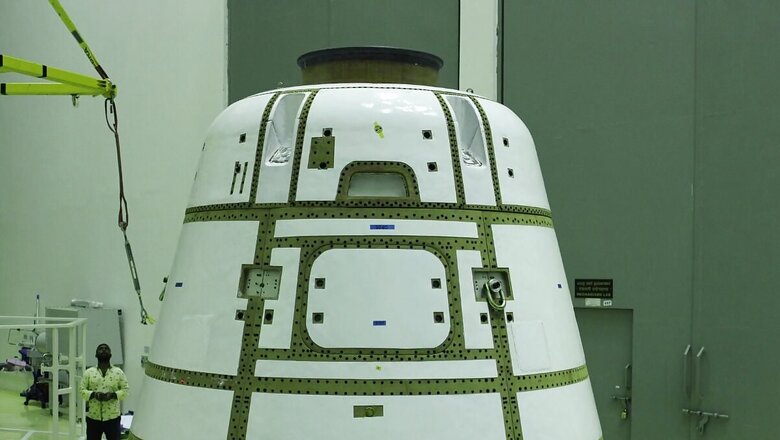
views
The Indian Space Research Organisation (ISRO) is geared up to put Gaganyaan to its toughest tests this year with at least two more test vehicle flights, and launch of the first of the two unmanned missions before the final human space flight takes off from Sriharikota in 2025.
The Rs 9,000 crore mission is India’s first attempt to take its astronauts into space using an indigenously-built rocket. The plan is to fly three Indian astronauts into a Low Earth Orbit of nearly 400 km using its heaviest launcher – LVM MK3 and bring them safely back to earth after three days.
The first test flight (TV-D01) conducted last October demonstrated its capability to recover the crew module when it splashes down in the adjoining seas during return. The team successfully tested the crew-escape system after executing the abort sequence when the rocket was just 15-17 km into the air. There are four such test vehicle flights planned, wherein ISRO will initiate an abort sequence under multiple scenarios to ensure the safety of the crew. This will be followed by two unmanned missions.
“2024 is going to be the year of Gaganyaan readiness. The mission is set for launch in 2025. We are expecting two test vehicle flights and an unmanned mission, apart from many more key tests and experiments. The first of the unmanned flights should happen later this year, and the next at the beginning of next year. There will be other missions aboard PSLV, GSLV as well as SSLV,” said ISRO chief S Somanath on January 1.
Apart from Gaganyaan, ISRO has also lined up several other critical missions this year, which include INSAT-3DS, RISAT-1B, Resourcesat-3, TDS01, SPADEX, Oceansat-3A, IDRSS, GSAT-20, NVS-02, test flights of the Reusable Launch Vehicle (RLV). The launch of NASA-ISRO Synthetic Aperture Radar (NISAR) which has been jointly developed by NASA & ISRO is also slated for this year.
Riding on the success of Chandrayaan-3, the space agency is also making efforts to reduce the launch costs across its centres. Under the latest push by the government, private players are also being encouraged to take up development of their own space transportation system and establish their own launch facilities.
In 2022, Skyroot Aerospace launched their sub-orbital launch vehicle ‘Vikram-S’. A private launch pad and a mission control centre is also being established within the ISRO campus for the first time by Agnikul cosmos, which is also gearing up for its sub-orbital launch this year.
According to IN-SPACe, as many as 523 space start-ups and companies have provided their capabilities on its digital platform, out of which, 297 have submitted applications seeking support from ISRO for R&D and testing. India has launched as many as 396 foreign and 70 domestic satellites in the last 10 years. As told to the Lok Sabha, ISRO has generated a revenue of around $157 million and €260 million from these launches. As per various global estimates and news outlets, the sector is projected to grow at 6-8 % in coming years.
The Indian Space Policy 2023 was also announced last year to enable end-to-end participation of the private sector in all domains of space activities.




















Comments
0 comment